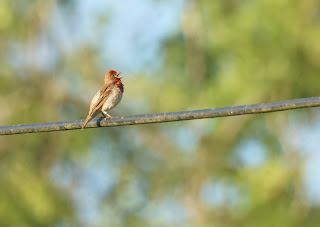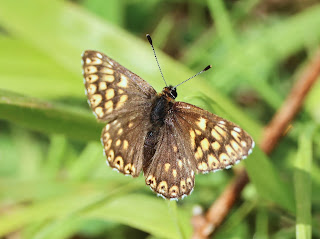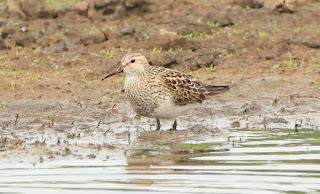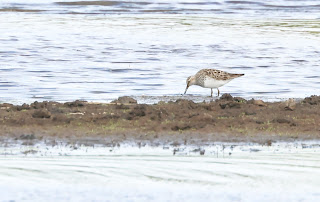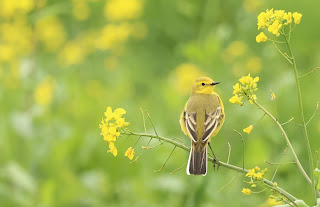They have a stout and conical bill and the males have brilliant rosy-carmine head, breast and rump; heavy bill; dark brown wings with two indistinct bars, and a white belly. Females and young males are dull-colored with yellowish-brown above, brighter on the rump and greyer on head; buff below, hence their name the grotfinch.
A relatively scares bird these can be seen in the UK between May and October more often or not they are seem around the coasts of southern and eastern England, eastern Scotland, and the Northern Isles.
They typically breed from the Danubevalley, Sweden, and Siberia to the Bering Sea; the Caucasus, northern Iran and Afghanistan, the western Himalayas, Tibet and China and Japan. In winter they are found from southern Iran to south-east China, India, Burma, and Indochina.
So to get a full summer plumage male singing and even chasing ff the resident house sparrows is a real treat. After arriving just after first light I could hear their obvious song enervating from a hedgerow close to the end house. The bird eventually popped on to the face overlooking the driveway.
Before I left it alighted upon the thick bottom telegraph wire and was singing away.
Really please to have finally caught up with it especially after dipping it a few days ago.






